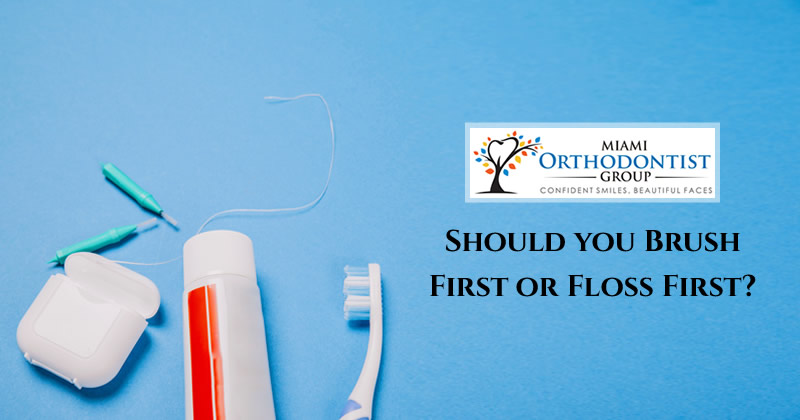Research shows, nearly 70 percent of Americans brush their teeth twice a day, but only 40 percent floss at least once daily. However, there is a strong connection between daily flossing and good oral health.
Studies show clear benefits of getting your teeth flossed. People who floss their teeth daily had a 40 percent lower risk of cavities. People most often inquire what should be done first brushing or flossing.
Should you Brush First or Floss First
Well, there are several differing theories on this. Some say that the flossing should be done first. They further say that after flossing, plaque and bits of food get loosened and can be easily brushed away after you’ve finished flossing.
Furthermore, fluoride in the toothpaste will make better contact if food wedged in between the teeth is removed before brushing.
Then there are people who argue to brush first and then flossing. They believe that brushing your teeth first removes the bulk of the plaque on the teeth and the flossing can force the remaining bit of fluoride into the in-between spaces.
However, regularly brushing and flossing is a must for the dental care, what to be done first depends on who you ask. Some dentists recommend flossing first, whereas others suggest to floss first. According to the American Dental Association (ADA) there is no problem in brushing first and then flossing or the other way round as long as you do a thorough job.”
The sequence however, makes no difference as long as you are doing a thorough job. Both brushing and flossing daily is the best way to prevent your teeth from decay-causing plaque and help maintain optimal oral health.
Choose a toothbrush that contains fluoride and has the ADA seal of approval on its packaging. The one that feels comfortable in your hand and in your mouth too. Also, make sure that you brush twice a day.
Use proper technique of brushing your teeth; always place your toothbrush at a 45-degree angle to the gums. While brushing the outer tooth surface, make sure you move your brush back and forth gently in short strokes. However, clean the insides of your front teeth by turning the brush vertically and making several short strokes along each front tooth.
Even brushing alone cannot remove the entire plaque from the tooth surfaces. Hence, cleaning between the teeth daily with floss is essential to remove debris from between the teeth where your toothbrush cannot reach. If you have difficulty in handling dental floss then you can use another kind of interdental cleaner such as special brushes, picks or sticks. Before using interdental cleaners, understand from your dentist about how to use the interdentals properly to avoid any injury to your gums.
Now it is essential to know whether you are doing a thorough job or not. How will you know that? As you go to dentist, he/she may recommend you to use plaque disclosing tablets. These tablets are easily available at pharmacies and other stores selling oral hygiene products. These tablets are chewed after you clean your mouth. Red dye in the tablets will stain plaque that has not been removed, helping you know the spots that need additional cleaning.
Also Read: How Important Is Flossing In Dental Care?


